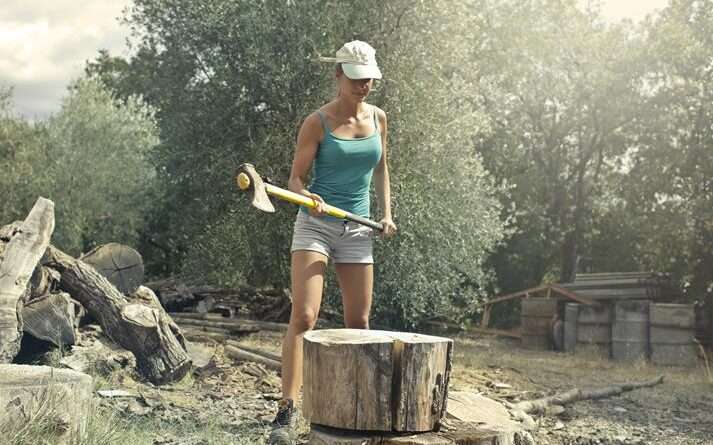
Imagine stepping outside onto your lush, green lawn. The air is crisp, and the leaves are beginning to change colors. It’s the perfect time to give your lawn some love and attention.
Autumn lawn aeration and overseeding is the secret recipe for a picture-perfect lawn. This process not only improves the health of your grass but also promotes stronger root growth and fills in any patchy areas.
Get ready to transform your lawn into a masterpiece with these simple steps.
Key Takeaways
- Overseeding improves the health and appearance of the lawn.
- A thick and lush lawn outcompetes weeds and prevents soil erosion.
- Choosing the right seed variety and providing proper maintenance ensures successful overseeding.
- Late August to early October is the ideal timing for aeration and overseeding.
The Benefits of Aeration and Overseeding
You should consider aerating and overseeding your lawn this fall for the benefits it brings. Overseeding is a practice that involves spreading grass seeds over an existing lawn. It helps to fill in gaps, improve density, and enhance the overall health and appearance of your lawn.
One of the main benefits of overseeding is that it helps to create a thick and lush lawn, which can outcompete weeds and prevent soil erosion. Additionally, overseeding can improve the tolerance of your lawn to drought, disease, and foot traffic.
To ensure successful overseeding, it’s important to choose the right seed variety, prepare the soil properly, and provide adequate watering and maintenance. By following these tips, you can achieve a beautiful and resilient lawn that will be the envy of your neighbors.
Transitioning into the next section, let’s explore when is the best time to aerate and overseed your lawn.
When to Aerate and Overseed Your Lawn
To achieve optimal results, plan to aerate and overseed your lawn in the early fall, when the soil is still warm and there’s ample time for the new grass to establish itself. This is the best time to rejuvenate your lawn and promote healthy growth.
Here are some key points to consider:
- Timing: Late August to early October is ideal for aeration and overseeding.
- Tools needed: You’ll require a core aerator, a lawn spreader, and high-quality grass seed.
- Aeration: This process involves removing small plugs of soil to improve air circulation, water absorption, and nutrient uptake.
- Overseeding: After aeration, spread grass seed evenly across the lawn to fill in bare spots and thicken the turf.
- Maintenance: Water the newly seeded areas frequently, keeping the soil moist until the grass is established.
How to Prepare Your Lawn for Aeration and Overseeding
To ensure successful aeration and overseeding, consider purchasing high-quality grass seed and using a core aerator in your lawn preparation. Preparing the soil before overseeding is essential for optimal results. Start by mowing your lawn to a shorter height and removing any debris or weeds. Next, use a core aerator to create small holes in the soil. This will improve air circulation, water absorption, and seed-to-soil contact. After aerating, it’s crucial to choose the right grass seed for your lawn. Consider factors like climate, soil type, and sunlight exposure. To help you make an informed decision, here is a table showcasing different grass seed types and their characteristics:
| Grass Seed Type | Characteristics |
|---|---|
| Kentucky Bluegrass | Durable, cold-tolerant, lush appearance |
| Bermuda Grass | Drought-resistant, heat-tolerant, fast-growing |
| Fescue Grass | Shade-tolerant, low-maintenance, disease-resistant |
Step-by-Step Guide to Aerate and Overseed Your Lawn
Once you have completed the necessary preparations, such as mowing and removing debris, it’s time to follow this step-by-step guide to aerate and overseed your lawn.
- Start by selecting the right aeration equipment for your lawn. There are various options available, including manual aerators, spike aerators, and plug aerators. Choose one that suits the size and condition of your lawn.
- Next, determine the type of grass seeds that are best suited for your region and soil type. Factors such as sunlight, shade, and foot traffic should also be considered. Consult with a local gardening expert or refer to reputable sources for guidance.
- Prior to seeding, ensure that the soil is properly prepared. Remove any existing thatch and loosen the topsoil using a rake or a dethatcher.
- Once the lawn is prepared, it’s time to aerate. Push the aerator into the ground, ensuring that the tines penetrate the soil to a depth of at least 2-3 inches. Repeat this process across the entire lawn, focusing on compacted areas.
- Finally, overseed your lawn by spreading the chosen grass seeds evenly across the aerated soil. Use a spreader or your hand to distribute the seeds, ensuring they make good contact with the soil.
By following these steps and using the appropriate aeration equipment and grass seeds, you can achieve a healthy and vibrant lawn that will be the envy of your neighborhood.
Happy aerating and overseeding!
Maintaining a Beautiful Lawn After Aeration and Overseeding
You will notice a significant improvement in the overall health and appearance of your lawn after aeration and overseeding. However, to maintain this newly revitalized lawn, you need to follow proper post-aeration care.
The first step is to avoid mowing your lawn for at least two weeks after the process. This allows the seeds to germinate and take root without disturbance.
Additionally, it’s crucial to water your lawn consistently, ensuring the soil remains moist but not overly saturated. Aim for about an inch of water per week, either through rainfall or irrigation.
Regularly inspect your lawn for signs of pests or diseases and take appropriate action if necessary.
Lastly, be patient, as it may take several weeks for the new grass to fully establish.
Frequently Asked Questions
Will Aeration and Overseeding Damage My Existing Grass?
Aeration and overseeding have potential benefits for your existing grass. They can help improve soil compaction and promote new growth. The best time to do this is in autumn for optimal results.
How Long Does It Take for the New Grass Seeds to Germinate?
To know if your new grass seeds are germinating, follow a watering schedule that keeps the top inch of soil consistently moist. It usually takes about 7-14 days for the new grass seeds to germinate.
Can I Use Aeration and Overseeding to Fix Bare Patches in My Lawn?
Yes, you can use aeration and overseeding to fix bare patches in your lawn. Aeration helps loosen compacted soil, allowing new grass seeds to establish better. Overseeding helps fill in thin areas, resulting in a healthier and more uniform lawn.
Do I Need to Water My Lawn More Frequently After Aeration and Overseeding?
After aeration and overseeding, it is crucial to increase watering frequency to ensure the new seeds germinate and establish properly. This post-aeration maintenance will help your lawn achieve its full potential.
Should I Mow My Lawn Before or After Aeration and Overseeding?
Before or after aeration and overseeding, it’s best to adjust your mowing schedule. The ideal time to mow your lawn is before the process to ensure the new grass seed has a chance to establish properly.












